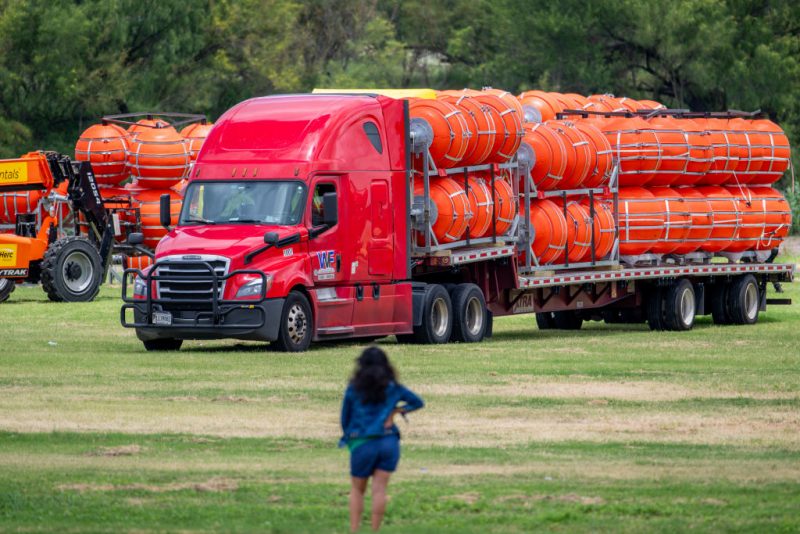
OAN’s Geraldyn Berry
9:35 AM – Saturday, July 8, 2023
Governor Greg Abbott has installed a stretch of buoys on the Rio Grande River that divides Texas and Mexico in an attempt to hinder migrants from crossing into Texas.
According to spokesperson for the Texas Department of Public Safety, Lt. Chris Olivarez, setting up the barriers could take up to two weeks.
At the border security bill signing ceremony on Thursday, the floating barrier was referred to as a “proactive way” by Steve McCraw, head of the Texas Department of Public Safety, to stop migrants from placing themselves at risk of drowning. He also stressed that the buoys will provide another level of border security.
“This was something that Border Patrol had already looked at, designed and even tested,” McCraw said.
McCraw praised the buoy barrier and claimed it could be “quickly deployed” and moved about. He said that the buoy would be moored to the waterway’s bottom and that, depending on the depth of the water, their height ranges from 4 to 6 feet. The floating barrier will span 1,000 feet — covering a tiny fraction of the 1,254 miles the river spans along the Texas-Mexico border.
In a 15-second video that Abbott (R-Texas) shared on Twitter, buoys that will be used in the river close to the border town of Eagle Pass are carried from trailers.
The governor noted in a tweet on Friday that the deployment is being managed by the Texas Department of Public Safety.
This comes as the Rio Grande’s fast-flowing waters have been one of the deadliest routes for migrants, leading to the drownings of men, women, and children in its turbulent currents.
After the Biden administration had stopped enforcing Title 42, a pandemic-era public health regulation that sent many asylum seekers back to Mexico, the mechanics of crossing changed in May. The maximum number of persons who may enter each day is 1,450, but new regulations allow people to request asylum through a government application and schedule appointments at the ports of entry. The policies of the Texas governor are directed at the numerous people who are angry about the cap and illegally cross the river.
In earlier incarnations of Abbott’s border mission, miles of razor wire were installed at well-liked river crossing spots, and state checkpoints were established beyond federal stops to assess entering commercial traffic.
Stay informed! Receive breaking news blasts directly to your inbox for free. Subscribe here. https://www.oann.com/alerts

